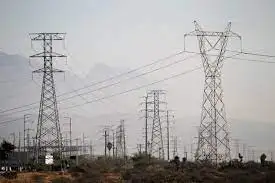GE Hydro To Upgrade Three Scottish Plants
OSLO, Norway -- - GE Hydro, a unit of GE Power Systems, has been awarded a US$3 million contract by Scottish and Southern Energy (SSE) Generation Limited of the UK to refurbish three hydroelectric power stations in Scotland.
The project is part of SSE's progressive program to upgrade its hydro assets to extend their usable life and meet the government's renewable energy targets.
GE Hydro will upgrade the hydro turbines at the Shin Power Station near Lairg, Sutherland and the Quoich Power Station near Invergarry, Inverness-shire, both in the north of Scotland; and the Finlarig Power Station near Bridge of Balgie, Tayside, in the central region of the country. The work scope includes the supply of new runners for each station, as well as new guide vanes for the Shin and Quoich stations, and new spears and nozzles at the Finlarig station. The power stations are all rated below 20 megawatts.
The upgrade will increase the plants' efficiency as well as qualify them for Renewable Obligation Certificates (ROC), part of a government program to encourage the building of new renewable energy plants in the UK. The program, established in April of 2002, requires electricity suppliers to ensure that a proportion of the electricity they sell comes from "green" sources.
"The upgrades at these power stations are part of SSE's US$397 million program to refurbish our hydro assets in the Highlands of Scotland. The refurbishments will not only extend the lives of the power stations but will contribute significantly to the government's objective of increased renewable energy resources by 2010 and beyond," said David Sigsworth, SSE's generation director.
Equipment for the project will be manufactured at GE Hydro's Norway facility. The completion dates for the projects are June 2003 for the Quoich station, July 2003 for the Shin station, and November 2003 for the Finlarig station.
Related News

Shell’s strategic move into electricity
LONDON - Royal Dutch Shell’s decision to sell electricity direct to industrial customers is an intelligent and creative one. The shift is strategic and demonstrates that oil and gas majors are capable of adapting to a new world as the transition to a lower carbon economy develops. For those already in the business of providing electricity it represents a dangerous competitive threat. For the other oil majors it poses a direct challenge on whether they are really thinking about the future sufficiently strategically.
The move starts small with a business in the UK that will start trading early next year. Shell…




